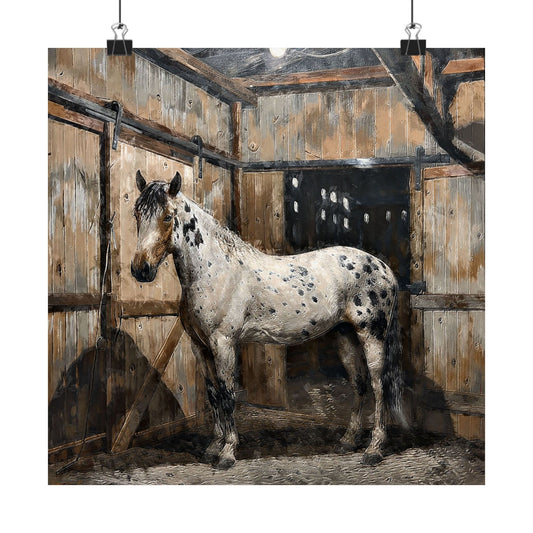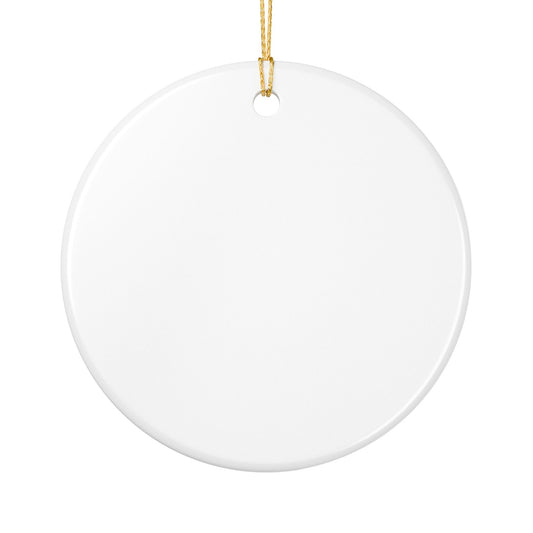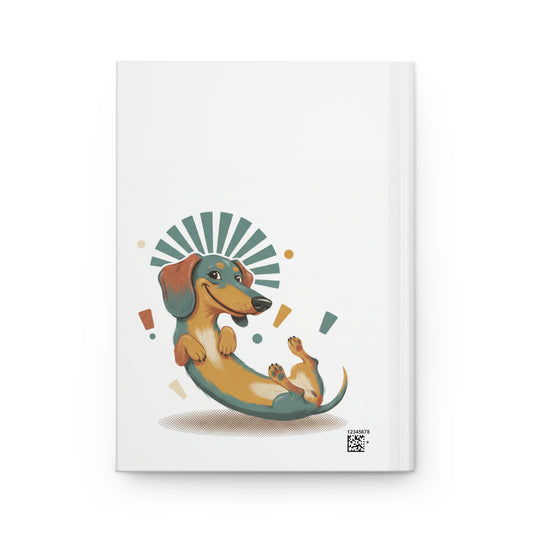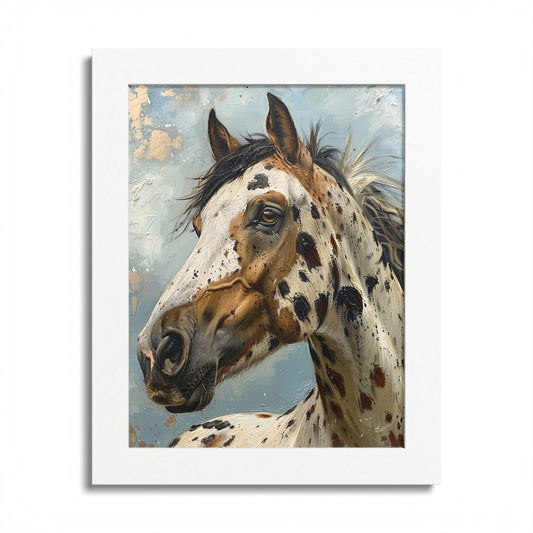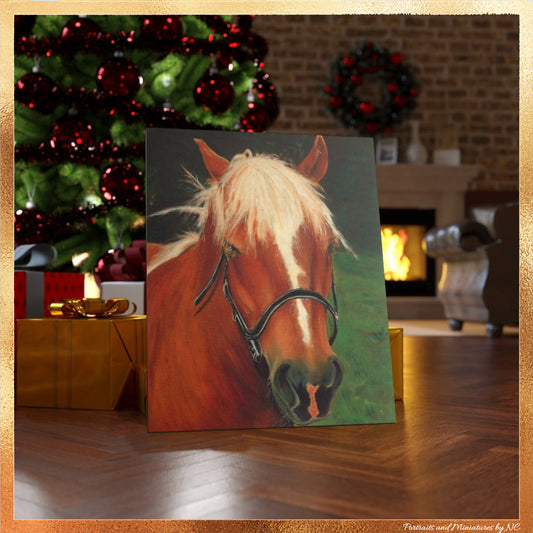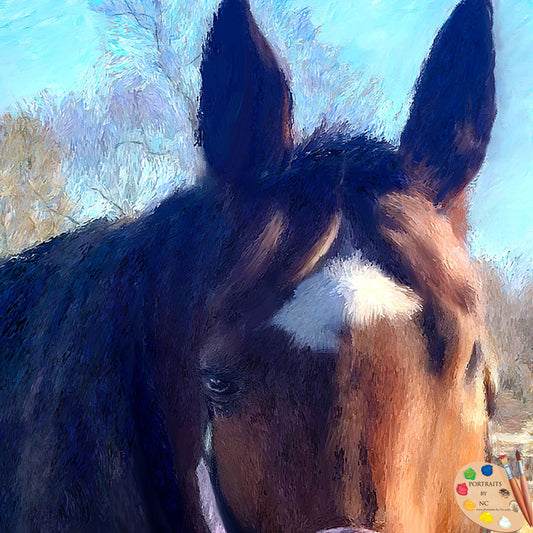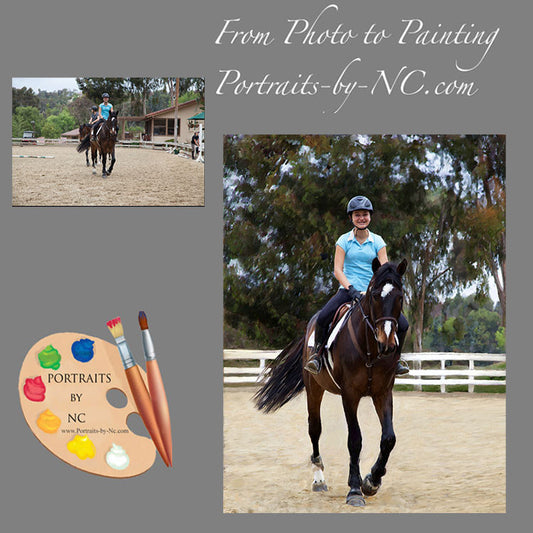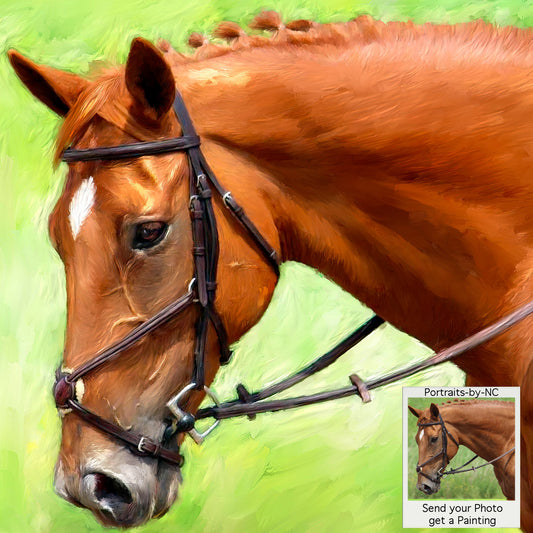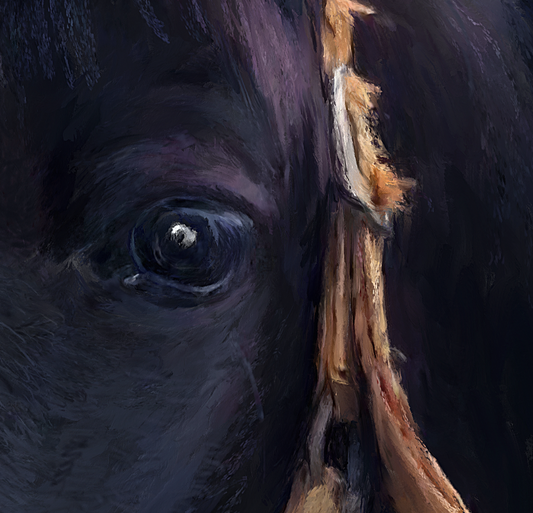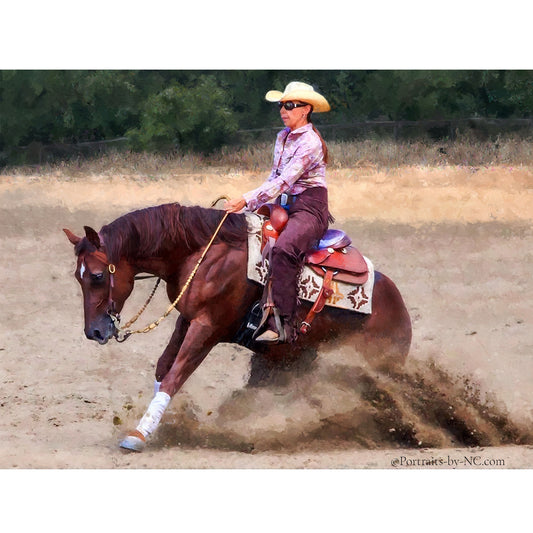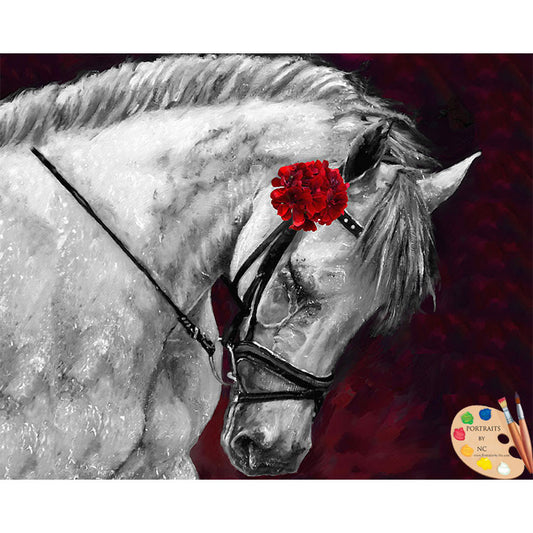Water Ripple Effect
Share

Portrait of Anna
I have been following along this Photoshop photo effects tutorial, and I thought why not share what I am learning on how to easily add a realistic water reflection to any photo. Although I have to say my version did not come out as well as the author's, it was a very easy effect to create.

To add the water reflection follow these steps:
Step 1: Duplicate The Background Layer

(The original image on the Background layer in the Layers palette.)
Duplicate the Background layer by using Ctrl+J (Win) / Command+J (Mac).
Note in Layers palette there are now two layers - the original Background layer on the bottom and a new layer, "Layer 1", above it.

(The Layers palette now showing the duplicate Background layer above the original.)
Step 2: Add More Canvas Space To The Bottom Of The Document
Click Image menu - Canvas Size.
Enter 100 for the Height - set measurement to percent - leave Width option set to 0. Check Relative option (tells Photoshop to give 100% more canvas space than is already there)
Click OK to exit out of the dialog box.
Note: Below the "Relative" option is a 3x3 grid of squares. This is where we tell Photoshop where we want to place our additional canvas space. Click inside the square in the middle of the top row.This tells Photoshop to place space at bottom:

(Add more canvas space using the "Canvas Size" dialog box)

(The height of the document has now been doubled with the extra canvas space added to the bottom.)
Step 3: Flip The Top Layer Vertically
In order to create our reflection, we need to flip our image upside down.
Select top Layers - go up to the Edit menu -choose Transform - choose Flip Vertical.
Photoshop will flip the image upside down in the document:

( Go to Edit > Transform > Flip Vertical to flip the image on the top layer upside down.)
Step 4: Drag The Flipped Image To The Bottom Of The Document
Flipped image needs to to be at the bottom of the document.
Grab Move Tool from the Tools palette, or press V on your keyboard for the shortcut.

(Select the Move Tool.)
With Move Tool selected, click inside the document and drag the flipped image down to the bottom until the top of it is lined up with the bottom of the original image above it. Hold down Shift as you drag to make sure you drag down in a straight line:

(Drag the flipped image down below the original.)
Step 5: Add A New Blank Layer
Begin to create the water ripple effect.
Add a new blank layer at the top of the Layers palette, so with "Layer 1" still selected, click on the New Layer icon at the bottom of the Layers palette:

(Add a new blank layer to the document)
Step 6: Fill The New Layer With White
If white is not currently your Background color, press D on your keyboard, which will reset Photoshop's Foreground and Background colors, making black your Foreground color and white your Background color.
Use the keyboard shortcut Ctrl+Backspace (Win) / Command+Delete (Mac) to fill the new layer with the Background color (white). Document will be filled with solid white.

(The entire image is now filled with white.)
Step 7: Apply The "Halftone Pattern" Filter To Create Black And White Horizontal Lines
Select Filter menu - Sketch - Halftone Pattern. This brings up Photoshop's Filter Gallery. We're going to use this filter to add a series of black and white horizontal lines to the image. These lines are going to become our water ripples. The more lines there are, the more ripples will be created.
Set the Pattern Type option to Lines. Control the number of lines by adjusting the Size option. Lower values create more lines and higher higher values create fewer but thicker lines.
Set Size value to 7. You may want to experiment with this value on your own. The Contrast option below it determines how sharp the edges of the lines are. Lower values create softer lines, while higher values create hard edged lines. Set this value all the way to 50 to give your lines sharp edges. We're going to soften them ourselves with the Gaussian Blur filter in a moment:

(Adjust the Halftone Pattern filter options to create a series of black and white lines through the image.)
Click OK when you're done to exit out of the dialog box.Photoshop will fill the image from top to bottom with stripes:

(The image is now filled with black and white horizontal lines.)
Step 8: Apply The "Gaussian Blur" Filter To The Lines
Before we can use our black and white lines as water ripples , we need to smooth them out and create nice, smooth transitions between them.
Go to the Filter menu - choose Blur - choose Gaussian Blur
Keep an eye on your image and drag the slider at the bottom of the dialog box to increase the Radius value until the lines have a very soft edge to them.
Set Radius value of about 4 pixels. Experiment again! When using a larger, high resolution image, higher values might work better:
Click OK to exit

(Use the Gaussian Blur filter to smooth out the edges of the lines)
Step 9: Duplicate The Lines Layer As A New Document
We're going to create a brand new document out of our lines layer, which we'll then use as our displacement map for our water ripples . With the lines layer selected, go up to the Layer menu at the top of the screen and select Duplicate Layer. In the "Destination" options, click on the down-pointing arrow to the right of the Document option and set it to New, which will create a new Photoshop document out of our layer:

(Set the "Document" option in the "Duplicate Layer" dialog box to "New".)
Click OK to exit out of the dialog box, and your layer will open up in a new document on the screen.
Step 10: Save The New Document And Close Out Of It
This new document will become the displacement map, but before we can use it, we need to save it. We're also going to close out of it after we've saved it, since we won't need it open anymore, and the easiest way to accomplish both of those tasks is to simply close out of the document. When you try to close out of it, Photoshop will as you if you want to save the document before closing it. Click Yes:

(Choose "Yes" when Photoshop asks if you want to save the document before closing it.)
Photoshop will bring up the Save As dialog box. You can name your new document anything you like. I'm going to name mine "water-ripples". Make sure you save it as a Photoshop .PSD file, since those are the only files that Photoshop can use as a displacement map. Save the document to your Desktop for easy access.
Step 11: Delete The Lines Layer
Now that we've used our black and white lines to create the file we'll be using as our displacement map, we can get rid of it. To do that, simply click on it and drag it down onto the Trash Bin icon at the bottom of the Layers palette:

Step 12: Merge The Two Layers Onto A New Layer
Before we can add use our displacement map, we need to merge our two image layers onto a new layer above them. To do that, with "Layer 1" selected, use the keyboard shortcut Shift+Ctrl+Alt+E (Win) / Shift+Command+Option+E (Mac). Nothing will appear to have happened in the document, but if we look in the Layers palette, we can see that both layers have been merged onto a new layer at the top:

(Both layers are now merged onto a new layer, "Layer 2".)
Step 13: Use The "Displace" Filter To Create The Water Ripples
With the new merged layer selected in the Layers palette, go back up to the Filter menu at the top of the screen, choose Distort and then choose Displace .
This brings up Photoshop's "Displace" filter dialog box. This is where we determine the strength of our ripple effect, and we do that with the Horizontal Scale option at the top. I'm going to set mine to a value of 4, which will give me a realistic ripple effect. Experiment! Setting it too high though will create too much of a horizontal distortion and you'll lose the realism.
We don't need any vertical distortion to create our effect, so set the Vertical Scale option to 0. Also, make sure that Stretch To Fit and Repeat Edge Pixels are selected:

(Go to Filter > Distort > Displace to bring up the Displace dialog box.)
Click OK in the top right corner of the dialog box, and Photoshop will ask you which file you want to use as your displacement map. Choose the file that you just saved a moment ago, which I saved to my Desktop as "water-ripples.PSD", and then click Open. Photoshop will then apply the displacement map to the entire image, creating our water ripples :

(The image after applying our displacement map with the "Displace" filter.)
Step 14: Hide The Ripples On Top With A Layer Mask
Of course, we have a slight problem at the moment. We've added our water ripple effect to the entire image, and we only wanted it in the bottom half. We can fix that easily though using a layer mask. First, Ctrl-click (Win) / Command-click (Mac) directly on the thumbnail for "Layer 1" in the Layers palette to place a selection around the flipped image at the bottom of the document:

("Right-click" (Win) / "Control-click" (Mac) directly on Layer 1's thumbnail in the Layers palette to place a selection around the flipped image.)
You'll see a selection appear around the bottom half of the image in your document. Now, with the merged layer still selected, click on the Layer Mask icon at the bottom of the Layers palette:

(Click on the "Layer Mask" icon to add a layer mask to the merged layer at the top of the Layers palette.)
Photoshop will add a layer mask to the merged layer, and because we had a selection around the bottom half of our document when we added the layer mask, only the bottom half of the merged layer remains visible. The top half becomes hidden from view, removing the unwanted water ripples from that part of the image:

(The ripple effect is now hidden from the top half of the image after applying the layer mask.)
We're almost done. Let's finish things off by adding a hint of color to the water, which we'll do next.
Step 15: Apply The "Gaussian Blur" Filter To The Layer Mask
Before we add our finishing touch by colorizing the water , let's soften the edge of the layer mask a little so there isn't such a harsh dividing line between the image on top and the water below. We'll use the Gaussian Blur filter for that, and since we want to apply it to the layer mask, we'll need to first select the mask. We can do that by clicking on the layer mask thumbnail in the Layers palette:

(Click on the layer mask thumbnail in the Layers palette to select the layer mask.)
You can tell that the layer mask is now selected by the white highlight box around its thumbnail. We're going to apply the Gaussian Blur filter to the mask, so go back up to the Filter menu, select Blur once again, and then select Gaussian Blur. When the dialog box appears, simply click OK to apply the same Radius value we used previously.
Step 16: Colorize The Water With A Hue/Saturation Adjustment Layer
Let's finish things off now by adding just a hint of blue to our water, and we'll use a Hue/Saturation adjustment layer for that. We want the adjustment layer to only affect the bottom half of the image where the water ripples are, so hold down your Alt (Win) / Option (Mac) key, click on the New Adjustment Layer icon at the bottom of the Layers palette, then select Hue/Saturation from the list of adjustment layers:

(Hold down "Alt" (Win) / "Option" (Mac), click on the "New Adjustment Layer" icon, then drag your mouse to "Hue/Saturation" to select it.)
By holding down "Alt/Option", this tells Photoshop to bring up the New Layer dialog box before adding the adjustment layer. Select the Use Previous Layer To Create Clipping Mask option by clicking inside the checkbox to the left of it:

(Select the "Use Previous Layer To Create Clipping Mask" option in the "New Layer" dialog box.)
This option tells Photoshop that we want the adjustment layer to affect only the layer directly below it in the Layers palette, and since the layer below it is the layer containing our water ripples , only the water ripples will be colorized, which is what we want. Click OK to exit out of the dialog box.
This will bring up the Hue/Saturation dialog box. We want to colorize our water, so the first thing we want to do here is select the Colorize option in the bottom right corner. Then select the color you want your water to be by dragging the Hue slider at the top. I'm going to drag my slider to the right to a value of about 218, which I think is a good color for my water :

(Use the Hue/Saturation dialog box to colorize the water .)
Click OK to exit out of the dialog box , and you'll see that your water on the bottom has now been colorized, but the color is much too strong at the moment.
Step 17: Lower The Opacity Of The Hue/Saturation Layer
To reduce the intensity of the color we just added to the water , all we need to do is go up to the Opacity option in the top right corner of the Layers palette and lower the opacity value. I'm going to lower mine all the way down to about 25%, which adds a much more realistic amount of color to the water :

(Lower the opacity of the adjustment layer until the water has only a hint of color to it.)
Once you've lowered the opacity of the adjustment layer to reduce the color intensity of the water , you're done!
Original text written By Steve Patterson






































